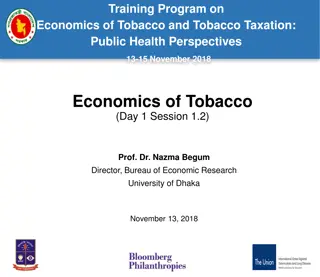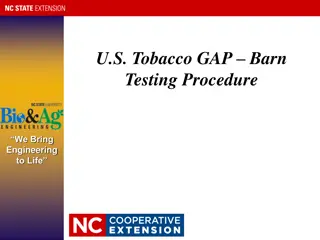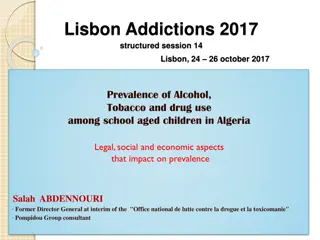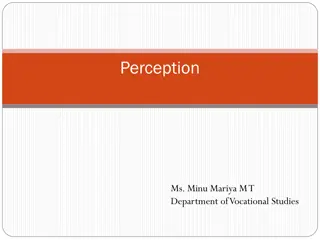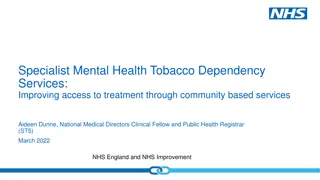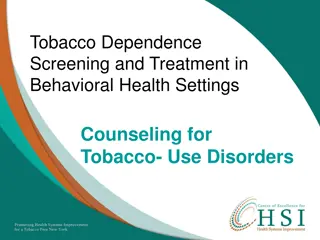Risk Perception Study on Tobacco Use Among Adult Females in Connaught Place, New Delhi
This study focuses on exploring the level of risk perception of tobacco use among adult females in Connaught Place, New Delhi. It aims to understand the types of tobacco products used, identify contributing factors associated with tobacco use, and suggest government-regulated interventions to reduce tobacco smoking among the population. The methodology involves a cross-sectional study with a sample size of 70 female participants aged 18 years and above using a semi-structured questionnaire. Data analysis is done quantitatively over a period of 3 months.
Download Presentation

Please find below an Image/Link to download the presentation.
The content on the website is provided AS IS for your information and personal use only. It may not be sold, licensed, or shared on other websites without obtaining consent from the author. Download presentation by click this link. If you encounter any issues during the download, it is possible that the publisher has removed the file from their server.
E N D
Presentation Transcript
"Risk Perception Study on Tobacco Use among Adult Female Population in Connaught Place, New Delhi: A Cross-Sectional Study" Presented by- Manish Bajaj (PG/21/145) Mentor: Dr. Rohini Ruhil Assistant Professor IIHMR Delhi 1
Mentor Approval 2 Risk perception study on tobacco use among adult female population in Connaught Place, New Delhi
Introduction Tobacco use is a major publc health concern in India. Tobacco use increases the risk of death from many diseases such as cancer, ischemic heart disease, chronic respiratory diseases and stroke. Overall global tobacco use has decreased over the last two decades, from 1.397 billion in 2000 to 1.337 billion users in 2018. The age-standardized tobacco use prevalence rates are also declining in all World Health Organization (WHO) regions. According to Global Adult Tobacco Survey, the prevalence of smoking tobacco in females in Delhi accounts for 1.8%, and total tobacco prevalence including smoke and smokeless tobacco is 4.8%. Other tobacco products include waterpipe tobacco, various smokeless tobacco products, cigars, roll-your-own tobacco, pipe tobacco, bidis and kreteks. Persistent smoking behavior in pregnant women is strongly associated with social health factors such as a young age, a lower socioeconomic status or education. 3 Risk perception study on tobacco use among adult female population in Connaught Place, New Delhi
Objectives To explore the level of risk perception of tobacco use among adult females in Connaught Place, New Delhi. 1 2 To understand the type of Tobacco products used in the study area 3 To determine the contributing factors associated with tobacco use among adult females. To identify potential government regulated interventions for reducing tobacco smoking among the population. 4 4 Risk perception study on tobacco use among adult female population in Connaught Place, New Delhi
Methodology(1/2) Study Population- Female population aged 18 years and above Sample size- Sample size calculated is 70, according to formula N= Z 2pq/d2 Data Analysis- Quantitative data was expressed using frequency and percentage. Chi square test was used to test statistical significance. Study Design- Cross- Sectional Study Sampling Technique- Stratified random Sampling Study Type- Quantitative stiudy Study Duration-3 months Inclusion Criteria: Female age 18years and above. People resident of New Delhi People who willing to participate Exclusion Criteria: People not willing to participate Male of all age group 5 Risk perception study on tobacco use among adult female population in Connaught Place, New Delhi
Methodology(2/2) Data collection tool- The semi-structured questionnaire contain a) individual information; b) smoking behaviour; c) Perceptions on smoking-related risks on KOBO tool Data Collection The anonymous, self- administrated version questionnaire was used collection. Study Setting- Parking areas, road side shops and smoking zone of resturant and clubs English for data Tools used in the study is from Knowledge and Perception about Health Risks Associated with Tobacco Habit A Survey for which ethical approval for the study was obtained from the Institutional Review Board, Saveetha Dental College and Hospitals, Chennai. 6
Results (1/5) Demographics Education Type of Product use by females Age Group 2. 27.8% 69.6% 23 10.4% Higher secondary Graduation Post -graduation n above 40.9% Figure 2 Education wise distribution of participants Occupation 48.7% 68.6% 7 5.7% 2.9% 14.3% 2.9% 5.7% 5 18-25 26-35 36-50 Cigarette Cigarette + Hookah Hookah Figure 3 Occupation wise distribution of participants Figure 4 Tobacco product use by females Figure 1 Age wise distribution of participants 7 Risk perception study on tobacco use among adult female population in Connaught Place, New Delhi
Results (2/5) Risk Perception of tobacco use Age related risk perception of tobacco user Age wise tobacco user who tried to stop 17 56 55 48 47 47 14 42 10 7 12 12 10 4 18-25 26-35 36-50 2 Total respondent 18-25 26-36 36-50 Awareness about smoking leads to lung and heart diseases Tobacco users Tried to stop Awareness about passive smoking or secondhand smoking Figure 5 Age related risk awareness of tobacco user Figure 6 Age wise tobacco user and tries to stop 8 Risk perception study on tobacco use among adult female population in Connaught Place, New Delhi
Results (3/5) Frequency of tobacco use Tobacco product vs frequency Age vs frequency Tobacco frequency vs quantity 0 0 36-50 2 HOOKAH 3 12 2 2 1 0 8 26-35 4 CIGARETTE + HOOKAH 3 7 12 4 5 0 1 18-25 7 CIGARETTE 7 7 0 1 0 1 0 0 0 1 15 LESS THAN 5 5 TO 10 MORE THAN 10 OCCASIONAL 0 2 4 6 8 10 12 14 0 5 10 15 20 SMOKER Don't know Some days Every day Every day Some days Don't know Don't know Some days Every day Figure 7 Age vs frequency of tobacco Figure 9 Tobacco frequency vs quantity of tobacco Figure 8 Type of products use by females Risk perception study on tobacco use among adult female population in Connaught Place, New Delhi 9
Results (4/5) Tobacco use among private job Factors influencing Habit Peer pressure Personal reason Stress Worklife imbalance N 7 6 5 5 1 % Factor influencing tobacco use 29.17% 25.00% 20.83% 20.83% 4.17% Factors influencing tobacco use Education Higher secondary Graduation Post -graduation n above N 2 10 23 % 31.43% 1.74% 8.70% 20.00% 25.71% 22.86% Physical Activity for private jobs Yes No N 21 3 % 87.50% 12.50% 14.29% Frequency Every day 2-3 days/ week Occasionally N 17 9 3 % 70.83% 37.50% 12.50% 5.71% Time dedicate for exercise Less than 30 min 30-60 min >60 min N 9 16 4 % 37.50% 66.67% 16.67% Peer pressure Stress Habit Worklife imbalance Personal Reason 10 Figure 10 Factors influencing tobacco use
Results (5/5) Factors Affecting smoking stress Potential government interventions for reducing tobacco use among female population. Occupation Self owned Government Job Private Job Student Housewife Unemployed 1 0 5 2 0 0 According to the latest report of Indian express, it shows that 700 challans in the area of Connaught place, New Delhi in the last 3 months. As per the latest act of COTPA, a person found smoking in a public place in Connaught Place can be issued a challan of Rs. 2000 for the offense. Association of occupation with factor affecting smoking stress- Chi-square test statistic: 11.167 The p-value is 0.0499, which is less than the conventional significance level of 0.05 which signifies association between "Occupation" and "Stress" as a factor affecting smoking As per the National Tobacco Control (NTC) Program, government has implement higher taxes on tobacco products, particularly those targeted at women, such as flavored cigarettes or slim cigarettes. 11 Risk perception study on tobacco use among adult female population in Connaught Place, New Delhi
Discussion (1/2) Lung issues have also been linked to other research and most often cited negative effects of smoking by women. In our study it is found that positive trend in awareness among adult females regarding the harmful effects of smoking on lung and heart health. According to previous study, damage caused by smoking is irreversible, but quitting smoking alters the health, reduces cancer risk, and improves the quality of life by 10 years. In our study, it is found most participants reported tries to quit tobacco in the past 12 months were 54.29%, this is because of the education level of participant and awareness to quit tobacco. Cigarettes remain one of the most common and widely used tobacco products in Delhi most often cited. According to our study cigarette smoking was the most common form of tobacco use, with 65.71% of smokers reporting cigarette consumption with majority of smokers consumed fewer than 5 cigarettes per day. 12 Risk perception study on tobacco use among adult female population in Connaught Place, New Delhi
Discussion (2/2) According to previous study, it suggests that the presence of a supportive social environment, such as living with family or friends. In our study, the majority of participants lived with their families, followed by living with friends and living alone along with that Private job holders constituted the largest occupational group. One of the primary reasons individuals smoke tobacco is due to its highly addictive nature of tobacco most often cited in previous research and in our study, it investigated the factors influencing tobacco use among adult females, specifically focusing on peer pressure, stress, habit, work-life imbalance, and personal reasons. According to the report of Global Adult Tobacco survey 2011, it reveals that the prevalence of tobacco use in the area of New Delhi among female population is 4.8%, and according to the study I have found that the prevalence of tobacco use among the participants was 30.43% 13 Risk perception study on tobacco use among adult female population in Connaught Place, New Delhi
Conclusion The findings of this study shed light on the prevalence and characteristics of tobacco use among the adult female population. It is evident that there is a need for comprehensive tobacco control interventions targeted specifically towards this group. The discussion highlights several important factors to consider when developing interventions, such as age, education, cigarette consumption, duration of tobacco use, physical activity, living arrangements, and occupational factors. By addressing these factors, governments and public health organizations can design tailored interventions that effectively reduce tobacco use among adult females. A multi-faceted approach that integrates education, awareness, cessation support, and environmental changes is crucial in reducing tobacco use among the adult female population. 14 Risk perception study on tobacco use among adult female population in Connaught Place, New Delhi
Reference Sharma R, Garg S, Gupta VK, Singh MM. Prevalence and determinants of hookah use among college-going women of Delhi. Natl Med J India. 2016 Nov- Dec;29(6):312-315. PMID: 28433940. Mishra G, Pimple S, Shastri S. An overview of the tobacco problem in India. Indian Journal of Medical and Paediatric Oncology [Internet]. 2012;33(3):139. Available from: https://www.ncbi.nlm.nih.gov/pmc/articles/PMC3523470/ DUHS Library. (n.d.). Quadrant I: Research methodology and biostatistics. Retrieved from https://duhslibrary.ac.in/Content/716_27_1493722858QuadrantI.pdf World Health Organization. WHO global report on trends in prevalence of tobacco use 2000-2025: Third edition. Geneva, Switzerland: World Health Organization; 2021. Umar A, Ibrahim A, Idris H, Ismail S. Quality of life and associated factors among breast cancer survivors attending a tertiary hospital in Nigeria. BMC Womens Health. 2022 Jan;22(1):30. doi: 10.1186/s12905-022-02014-3. PMID: 34958749; PMCID: PMC8803711. The Tobacco Atlas [Internet]. 2022 [cited 2023 Mar 17]. Available from: https://tobaccoatlas.org/. Pandey D, Goel S, Kondal D. Predictors of maternal anemia in a rural area of Haryana, India: A secondary data analysis. J Family Med Prim Care. 2017 Oct-Dec;6(4):711-716. doi: 10.4103/jfmpc.jfmpc_172_16. PMID: 29417048; PMCID: PMC5792555. Kruk ME, Gage AD, Arsenault C, Jordan K, Leslie HH, Roder-DeWan S, Adeyi O, Barker P, Daelmans B, Doubova SV, English M, Elorrio EG, Guanais F, Gureje O, Hirschhorn LR, Jiang L, Kelley E, Lemango ET, Liljestrand J, Malata A, Marchant T, Matsoso MP, Meara JG, Mohanan M, Ndiaye Y, Norheim OF, Reddy KS, Rowe AK, Salomon JA, Thapa G, Twum-Danso NA, Pate M, Freedman LP. High-quality health systems in the Sustainable Development Goals era: time for a revolution. Lancet Glob Health. 2018 Nov;6(11):e1196-e1252. doi: 10.1016/S2214-109X(18)30223-7. PMID: 30322627. Stead LF, Perera R, Lancaster T, Griffin A. Telephone counselling for smoking cessation. Nicotine Tob Res. 2004 Nov;6 Suppl 2:S125-S130. doi: 10.1080/14622200412331320759. PMID: 15799598. Centers for Disease Control and Prevention. NHIS adult questionnaire 2016 [Internet]. Atlanta (GA): Centers for Disease Control and Prevention; 2016 [cited 2023 Apr 2]. Available from: https://ftp.cdc.gov/pub/Health_Statistics/NCHS/Survey_Questionnaires/NHIS/2016/english/qadult.pdf. Giri V, Karthikayan R, Krishna M, Ramesh T, Reddy SV. Knowledge and perception about health risks associated with tobacco habit - A survey. ResearchGate. 2020 [cited 2023 Apr 2]. Available from: https://www.researchgate.net/publication/344975036_Knowledge_and_Perception_about_Health_Risks_Associated_with_Tobacco_Habit_-_A_Survey. 15 Risk perception study on tobacco use among adult female population in Connaught Place, New Delhi
16 Risk perception study on tobacco use among adult female population in Connaught Place, New Delhi
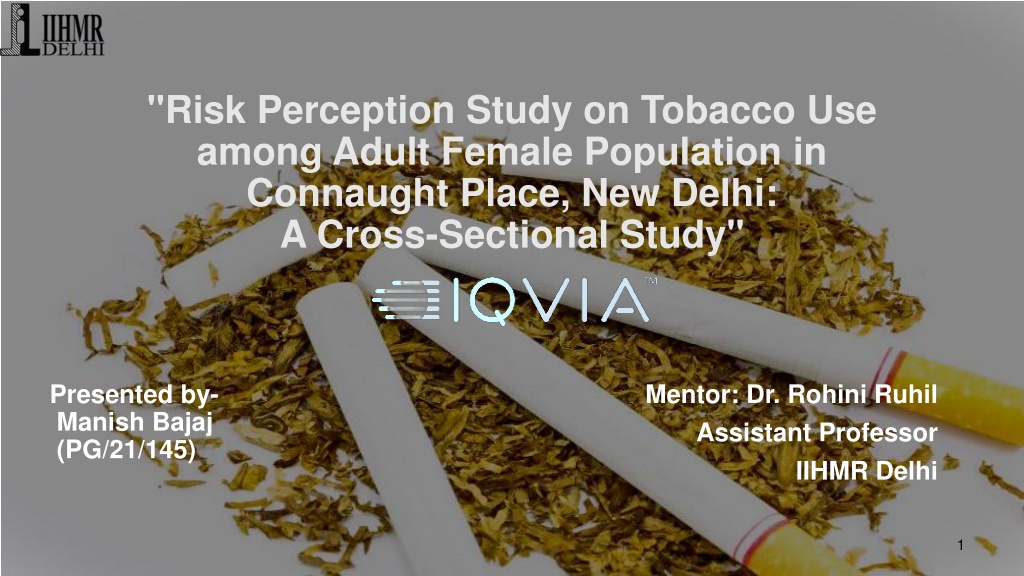

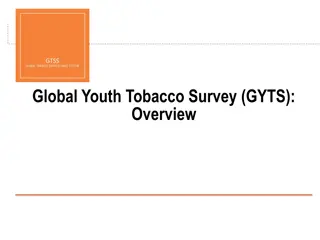




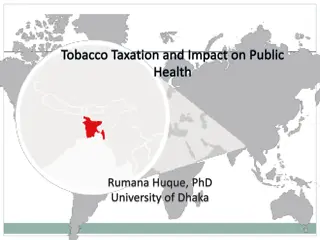
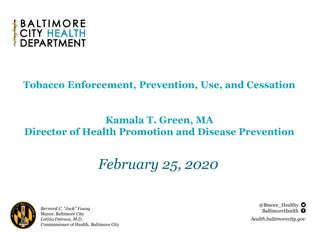
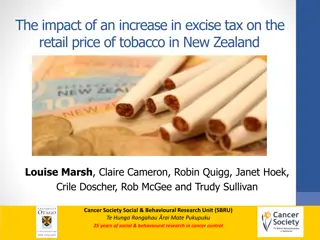
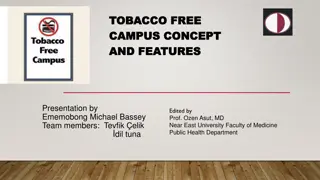
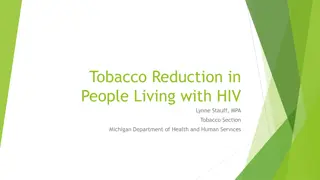


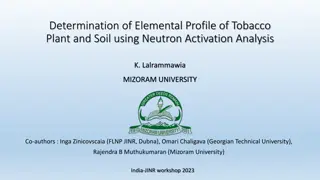

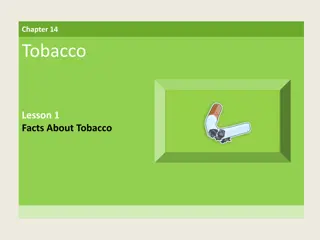



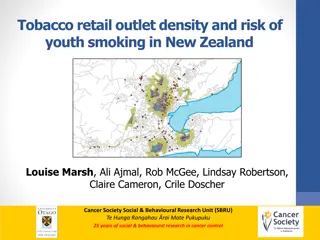

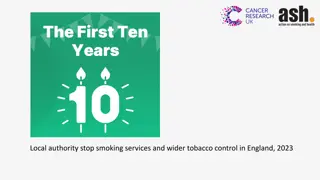

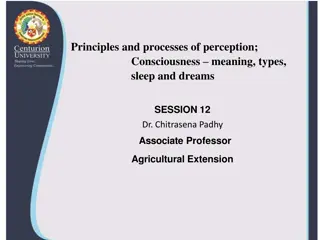


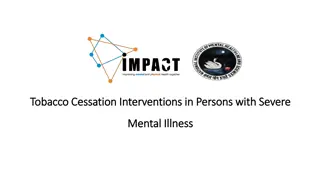

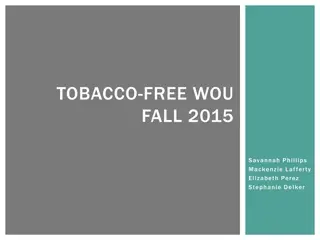




![Protecting Youth Through Tobacco Retail Licensing in [Your County]](/thumb/175307/protecting-youth-through-tobacco-retail-licensing-in-your-county.jpg)
